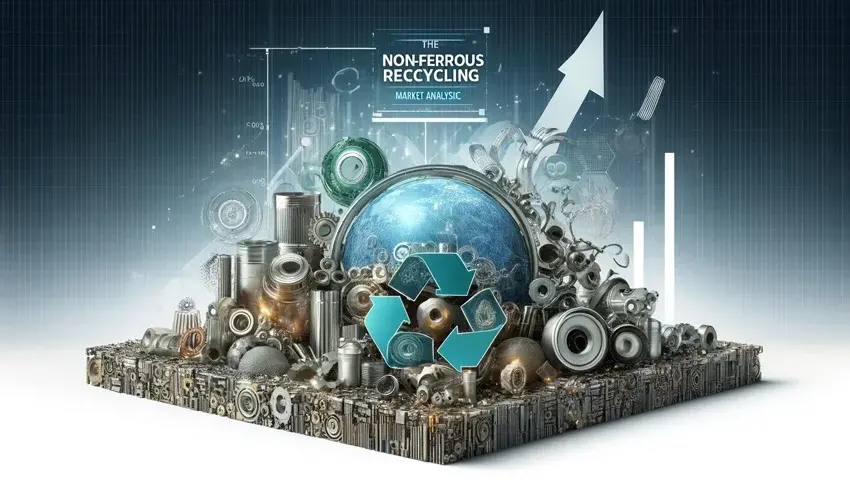
An Overview, Size, and Analysis for the Next 5 Years in the Non-Ferrous Metal Scrap Recycling Industry.
In this analytical overview, we delve into the scale and key growth trajectories of the metal scrap recycling industry, highlighting the distinctions between ferrous and non-ferrous metals. We dive deep into a sectoral analysis, encompassing construction, automotive industries, consumer goods, and industrial products, with a special focus on metals such as aluminum, copper, and lead. Furthermore, the study segments key regions from North America to Latin America, including Europe, Asia and the Pacific, as well as the Middle East and Africa, providing forecasts and expectations for the industry over the next five years.
The global non-ferrous metal scrap recycling market was valued at just under USD 280 million in 2024 and is projected to reach USD 350 million over the next five years, with an annual growth rate exceeding 3% from 2024 to 2029.
Non-ferrous metals have carved a niche in the market as more valuable than their steel and iron counterparts due to the absence of iron as the primary alloying element. Their high value is due to a range of benefits: aluminum is notable for its strength-to-weight ratio, copper for its excellent conductivity and malleability, while nickel and zinc offer exceptional resistance to corrosion. Capable of being recycled multiple times without degradation of their inherent properties, lead, nickel, zinc, aluminum, and copper remain in high demand in the scrap metal market. The collection and recycling of these metals, from industrial waste to outdated scrap, involve their sorting and compaction into manageable blocks for ease of transport and further processing.
Increased public awareness of environmental issues, economic benefits, and energy conservation in the recycling of non-ferrous metals is fueling demand and market growth. Aluminum, abundant in the Earth's crust and leading the way as one of the most recyclable resources, plays a pivotal role in the sustainable development of the industry, offering both economic and environmental advantages.
The surge in autonomous investments is crucial to the expansion of the global non-ferrous metal recycling market. Metals, including nickel, silver, copper, aluminum, and tin, possess an exceptional ability for unlimited recycling without compromising their initial qualities. This process not only ensures the prudent use of natural resources but also represents a financially sound decision. Utilizing already extracted metals, particularly common ones like aluminum and copper, is considerably more cost-effective than mining anew. Therefore, recycling becomes not just an environmentally responsible choice but also an economically advantageous strategy, highlighting the importance of reusing resources for the sustainable growth of the economy.